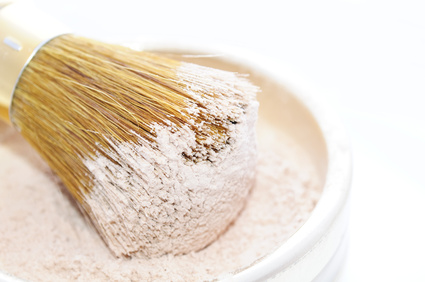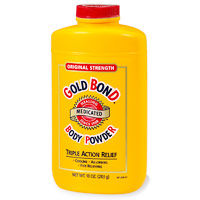
Confusion On Talc In Cosmetic Products With 2019 Updates
First off, we wish to preface the information you are about to read; we don't use Talc in any of our mineral makeup products, but not because of the growing concerns being proclaimed that Talcum powder is toxic. We simply present the science and hope you find it helpful.
Unfortunately, there are many individuals who choose to ignore the complexities of chemical ingredients by still blogging 'faux' facts or simply propagate pseudo science in their latest published book that 'Talc is toxic' or 'Talc contains asbestos' or 'Talc causes ovarian cancer' etc., as though these statements stand on their own merit as the absolute evidence without substantiating it with actual scientific research.
Those that spread the fear to consumers are typically parroting other Talc articles written without consequence or understanding of the harm they do to the public when repeating these unfounded claims.
Why do they do this you may ask? Because if they do present the science it would be in direct opposition of whatever agenda they seek whether it is self promotion of their latest book or generating sales of their so called "chemical free" products, which is physically impossible we might add.
Sadly 'FEAR' sells by scaring women into thinking they must buy this book or product to keep them from harm or death of the supposed Talc toxicity related cancer, or any other chemically related fear based fallacy created solely as a marketing premise.
Our Customers Want Facts, Not Marketing Hype
Fortunately, our customers are quite savvy and realize that so much of what is offered across the internet in terms of the scary information is designed for marketing purposes. Plus, more and more women that find us are sharing our information and the science we provide in order to create a balance to the ongoing controversies that surround many of our makeup and skincare ingredients.
The science based research on Talc safety is in fact available, and we have provided some interesting information in the links below to support the evidence. We have done thorough research on this ingredient, and as it has been in the past for so many other maligned, natural or otherwise, ingredients, has been found to be safe for it's use in cosmetic and skincare products.
Talc research to date has not shown any scientific study to conclusively claim that it causes cancer in any form, much less be toxic, including the research provided by the UK. Furthermore, Talc has been used in medical studies showing therapeutic benefits when used as a sclerosing agent for the reduction of malignant lung tumors, and is supported by peers in the medical community.
The American Cancer Society in regard to Talc
Talc Studies, the FDA and Research Use
Talcum Powder and Cancer Research in the UK
University of Florida Peer Reviewed Case Study on Talc for Lung Tumor Reduction
What About The Claims Of Asbestos In Talc
It is important to explain the composition since it must be clarified in this context as was similar to the misinformation that has also occurred with Silica used in mineral makeup.
Talc is a naturally occurring mineral, mined from the earth, composed of magnesium, silicon, oxygen, and hydrogen. Chemically, talc is a hydrous magnesium silicate with a chemical formula of Mg3Si4O10(OH)2. Talc can be found in many cheap brands of mineral makeup products, but Talc also has many uses in other cosmetics and personal care and skincare products. For instance; in food, such as rice and chewing gum; and in the manufacturing of oral tablets. It may be used to absorb moisture, to prevent caking, to make facial makeup opaque, or to improve the silken feel of a product.
Asbestos is in fact, also a naturally occurring silicate mineral, but with a different crystal structure. Both Talc and asbestos are naturally occurring minerals that may be found in close proximity in the earth. Unlike Talc however, asbestos is a known carcinogen. For this reason, FDA considers it unacceptable for cosmetic talc to be contaminated with asbestos so it is not allowed in any personal care products to date, including makeup products. Asbestos under FDA regulation, has not been allowed in any makeup and skincare products containing Talc since the 1970's.
Sadly, as we may be learning now, there can be the unscrupulous manufacturer that may ignore an accidental contamination with asbestos and this would be unconscionable since asbestos has been proven to be a known carcinogen. Reputation aside, talc products are still quite safe for cosmetic use when prepared and sold according to FDA regulations.
When Talc Stands Alone In A Single Study Is A Concern
There was a single narrow inhalation study performed on rats linking it to lung damage in different forms, however, this study does not extrapolate to humans. What they also don't really emphasize, is in the study the rats were being forced to inhale the talc for 6 hours a day for 2 years. Never mind the fact that this was nothing short of being inhumane because it is nothing but, is the simple fact that no consumer will ever in their entire life inhale this much Talc unless they deliberately bury their face in a pile of it and breathe in deeply.
This study gets referenced by the naysayers using the over inflated information forcing high quantities onto the animal to show the (supposed) dangers. Chronic toxicity is more likely the cause based on aspiration overload on the rats and the same thing could be said if any one of us inhaled copious amounts of water. We would not survive it.
As with any disliked ingredient, those that spread the hyperbole to malign an otherwise safe cosmetic ingredient, should be challenged by providing any peer reviewed studies in support of the "scary" information they are spreading in their books, websites or blogs.
UPDATE: 2019 The FDA Does Their Own Testing To Alleviate Public Concerns As Controversy Continues
In 2009 through 2010, random samples of cosmetics and personal care products containing Talc, including the raw Talc before being added to cosmetics, were tested by independent laboratories since FDA does not do their own testing on individual ingredients. It was important to do follow up testing to address continued concerns that asbestos is in our Talc products.
The good news was the initial survey found no asbestos fibers or structures in any of the samples of cosmetic-grade raw material Talc or cosmetic products containing Talc. However, the sampling was limited to 4 raw ingredient suppliers so they make no guarantee of all cosmetic manufacturers complying, yet they will continue to monitor the situation going forward. We believe one reason they take this stand on Talc, is due to many of our cosmetic ingredients come from Asia where their cosmetic manufacturing processes are not as stringent. They also don't stipulate if J & J were one of those brands studied.
FDA however, is issuing warnings as recent as March 12th 2019 and is moving forward with monitoring more closely asbestos contamination in response to discovery through the legal filings of studies exposing contamination of talc with Asbestos. It is worth noting that the FDA is taking this evidence seriously and adjusting accordingly for cosmetic safety to consumers.

Our Stance On Talc In Skincare Or Mineral Makeup Products
We do not fear Talc, nor are we concerned in the way that so many others are. In Fact, it's lubricious texture feels wonderful when used in one of our favorite body powder recommendations (Gold Bond) and works terrifically for soothing, cooling and absorbing perspiration. Women especially love Talc when found in foot powders or body powders for when used in areas around where friction occurs, such as in the bra area.
In regard to why we don't use it in our mineral makeup products, is mainly due to the consistency and the finished look on the skin. It will always appear cakey or chalky, can be quite drying and it is also known to enlarge pores on the face, which in turn can clog pores causing ongoing bouts of acne.
Cosmetically we don't find it conducive for keeping the face looking healthy, but for body powder uses, it is unsurpassed. Take a look at the research provided and then decide for yourself what is best for you.
UPDATE 2019: After Talc Lawsuits Against Johnson and Johnson
If you are truly worried about private areas of the body due to a cancer concern, then simply forgo this type of application and reserve it for reducing abrasion and irritation of the skin rubbing against itself, or clothing friction, especially once you perspire.
In the latest update, it is now being presented the Talc used in the Johnson and Johnson products may have been contaminated with asbestos and was known by the brand. If this presents as fact as the truth bears out, then this is truly an inexcusable act on the company's part since the FDA does outlaw the contamination in all cosmetic products. In which case, if Asbestos was within the talcum powder that was used for hygiene, then absolutely a cause and effect could be established. Shame on this company if it is true they deliberately ignored asbestos contamination of it's brands talc, and it appears they are currently under investigation by the SEC.
The latest jury award in California is continuing the claim of Asbestos contamination while J & J stands by their argument it was not.
However, with some of the initial lawsuits claiming talc, absent the asbestos of course, caused ovarian cancer or endometrial cancer to a number of women which class action suits can tend to attract, will need to provide if there is actual evidence to support a cancer was a direct cause to use of talc products. After a 3 trial winning streak against J&J, a Missouri court found in J&J's favor stipulating the science has not been conclusively shown for this to be a talc causation of increases in cancer. Furthermore J&J stands by the safety of their products and are planning more appeals.
We do regret we cannot followup with every email we receive in regard to our articles on line. However we don't ignore them either, and will respond with updates to the article itself. We very much wish to help those that contact us with their concerns or negative aspects of Talc. We have experienced an attempt in their contact with us to extrapolate this article with the supposed dangers to ovarian cancer, which unfortunately they have essentially confused it's premise. We are not debating hygienic uses of talc, but are standing by the overall content as it pertains to cosmetic or skincare use, and in this regard we show the incontrovertible science as to it's therapeutic uses and safety in cosmetic use.
Going forward, we will reserve judgement in context to the ongoing litigation and realize science is ever evolving, such as the talc uses in the private areas of the body may be of greater concern to women, and it is a choice one has to make for their own personal health. We follow abstracts in relation to peer reviewed research on any given ingredient and PubMed is a well established and trusted outlet for such science. We have provided some of that evidence in the links below.
We also know there will be conflicting and opposing studies within PubMed to any and all science, yet a consensus will eventually come to a fever pitch. We are patient with a wait and see attitude for that consensus instead of reacting to the many knee jerk reactions known as the precautionary principle we see throughout the blog spheres littering the internet. Wheels of science are a slow and grueling process and oftentimes contributes to consumer confusion, which is why we updated this article to separate the two uses (cosmetic vs hygiene) and reflect any concerns a consumer may have based on the current climate of the Talc Controversy.
PubMed: Perineal Powder Use and Risk of Ovarian Cancer
PubMed: Perineal Application of Talc and Ovarian Cancer Risk Assessment
Johnson and Johnson Cleared In Talcum Powder Cancer Trial
